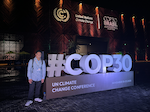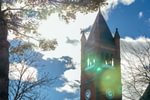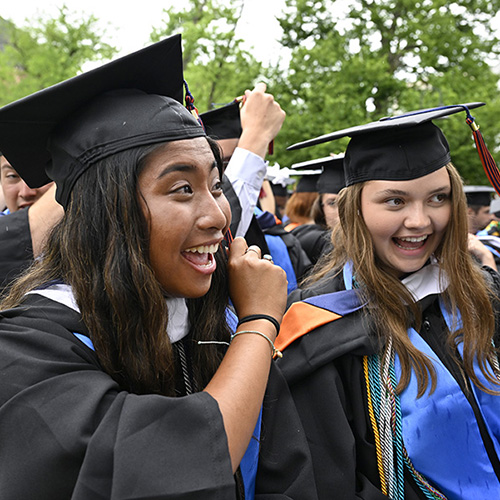
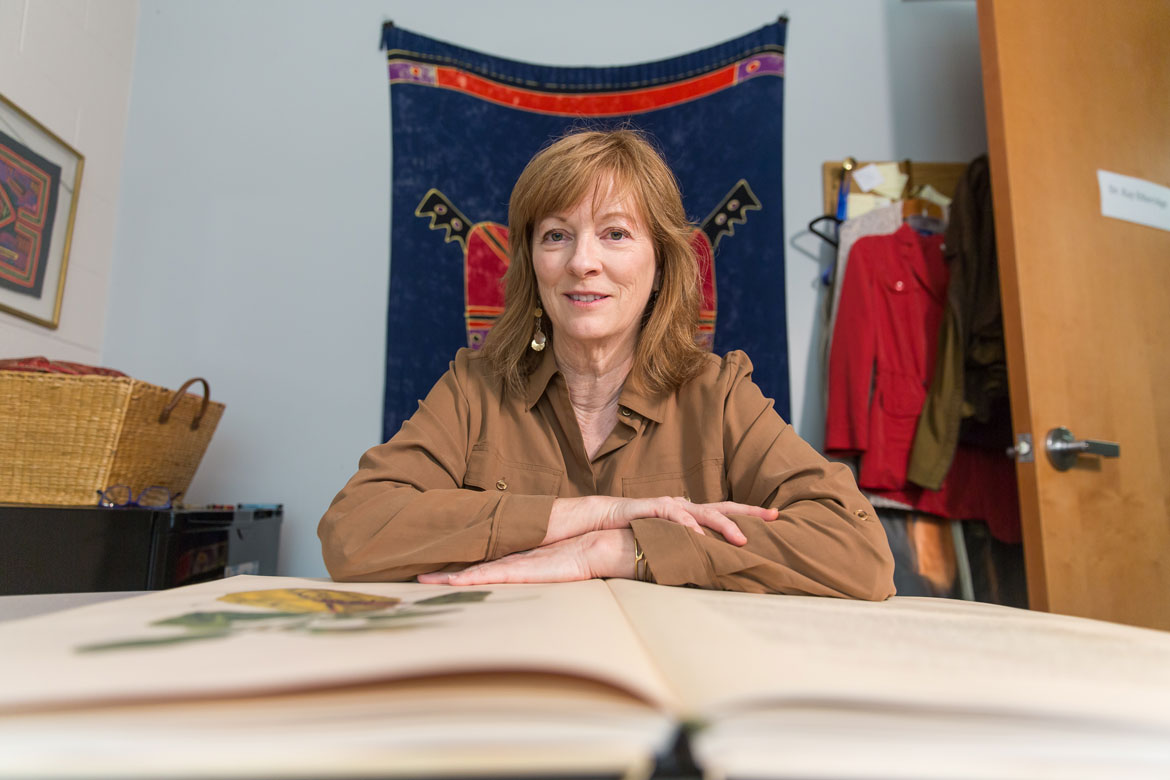
Biology Prof. Kay Etheridge sits at a small table in her office, flipping through the colorful illustrations in a large, hardcover book about the artist and early ecologist Maria Sibylla Merian.
“Looking at her images is endlessly fascinating,” says Etheridge.
Merian was born 370 years ago, and this year is the tercentenary anniversary of her death. The book, Maria Sibylla Merian: Metamorphosis Insectorum Surinamensium, reprints Merian’s original work, published in 1705, and includes new commentary from scholars. Etheridge was the only scientist and non-Dutch author to write commentary for the facsimile volume. Recently, The New York Times and The Atlantic wrote about Merian, referencing Etheridge’s research.
Etheridge is quick to say that although Merian was an impressive woman for her time, her findings weren’t exceptional in spite of being a woman. They were interesting in their own right.
In 1699 Merian went to South America for two years and studied tropical insects and the plants on which they lived. “She brought the insects back into the plantation house where she lived, raising them from caterpillars so she could study their life cycle,” Etheridge says.
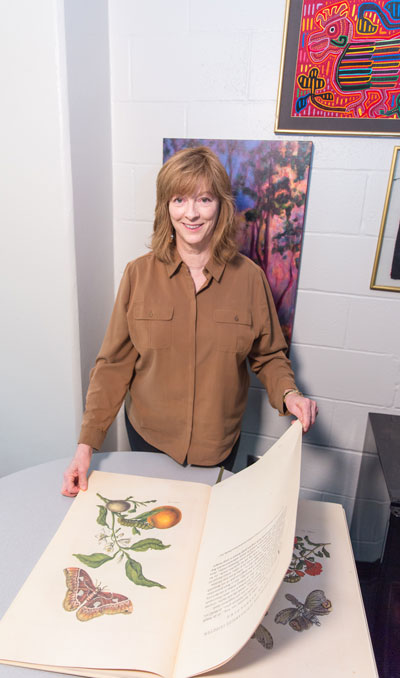 Sometimes she would wait all night for an adult moth or butterfly to come out of their cocoons, recording their metamorphosis with her precise artwork and written notes. “What some people who study her from the [lens of] art history didn’t know is, it’s hard to raise caterpillars. This is where the biology comes [into play]. Only a small percentage of caterpillars live to be adults, so she had to be persistent.”
Sometimes she would wait all night for an adult moth or butterfly to come out of their cocoons, recording their metamorphosis with her precise artwork and written notes. “What some people who study her from the [lens of] art history didn’t know is, it’s hard to raise caterpillars. This is where the biology comes [into play]. Only a small percentage of caterpillars live to be adults, so she had to be persistent.”
Merian was influenced by her publishing family and her stepfather, who was also an artist. But what made her work unique was a simple, yet significant, detail. She drew ecologically related plants and animals together, instead of separately. According to Etheridge, at the time there existed decorative paintings of plants and animals together, but for the most part, they were species with no real connection in the environment.
“The thing I write about as a biologist that people haven’t emphasized before, is [Merian] studied the insects on the plants that they lived on,” says Etheridge. “Everybody before her would have books on plants, or books on insects, but they wouldn’t put them together. This was the first time they were put together in the same ecological communities. She created ecological communities in her artwork and described relationships in her writing.”
It was painstaking work. Merian had to know what the insects ate and then collect those plants so she could rear the insects to adulthood. At the time Merian wrote her first book on insects she was 32 and, in addition to her insects, raising a one-year-old and nine-year-old. “She wasn’t rich,” says Etheridge. “She was doing this while being a housewife and mother.”
Etheridge has been doing her own painstaking work, combing through Merian’s illustrations and written descriptions to determine the accuracy of her 17th century findings—essentially fact checking the biology in Merian’s work. “The next question is, how did she become this person,” Etheridge says. “I looked into her background and history, trying to figure out her working methods and understand her impact on other naturalists. I make the argument that she was the mother of ecology.”
Like Merian, Etheridge is a scientist and artist. She took her first painting class when she was on her first sabbatical at Gettysburg and fell in love with it. Her paintings decorate her office walls. Etheridge can appreciate the detail of Merian’s work and process, which she explains consisted of going for walks, feeding her caterpillars, painting, engraving, and then printing—learning about nature and completing every step herself.
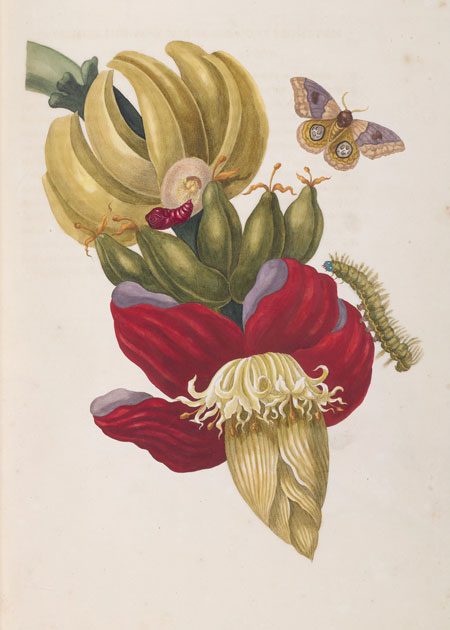 Etheridge plans to travel to Nuremberg to visit the house where Merian lived and worked and see a historic garden where she collected some of her subjects. In early June, she was at a new conference in Amsterdam that she co-organized, an international symposium on Maria Sibylla Merian for those who study her work. About 200 art historians and other scholars attended. Etheridge contributed a plenary presentation, speaking from a biologist’s perspective. In addition to helping to create the conference, Etheridge is also a founder of The Maria Sibylla Merian Society, which is an international group that aims to bring artists, historians, and scientists together in their study of Merian.
Etheridge plans to travel to Nuremberg to visit the house where Merian lived and worked and see a historic garden where she collected some of her subjects. In early June, she was at a new conference in Amsterdam that she co-organized, an international symposium on Maria Sibylla Merian for those who study her work. About 200 art historians and other scholars attended. Etheridge contributed a plenary presentation, speaking from a biologist’s perspective. In addition to helping to create the conference, Etheridge is also a founder of The Maria Sibylla Merian Society, which is an international group that aims to bring artists, historians, and scientists together in their study of Merian.
“It takes different specialists to study Merian—there’s biography involved, studies of the artwork, culture and time period—but it takes a biologist to look for the scientific information,” she says.
Etheridge first began to focus on Merian after the fall of 2000 when she was teaching a class in London. “I created the course concentrated on British art and science, but as I read more and more I ran across [Merian] and ultimately kept circling back and became completely obsessed with her.”
This fall, Etheridge will co-teach her interdisciplinary First-Year Seminar course, “Wonders of Nature and Artifice: The Renaissance Quest for Knowledge,” with art and art history Prof. Felicia Else. Students build their own art exhibit in Schmucker Art Gallery as part of the course—“because this is how people learn about the world,” Etheridge says. She believes making interdisciplinary connections, particularly between art and science, can lead to new discoveries.
“Making connections between art and science is so important,” she says. “When you have a foot in both disciplines, or you’re working with collaborators from different fields, you make interesting findings on the intersecting edges. That’s where some of the most fascinating work is done.”

